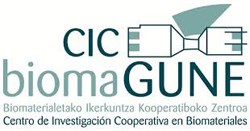
The CIC biomaGUNE functional and molecular imaging platform is located in San Sebastian (Basque Country) and was recognized as a Singular Scientific and Technological Infrastructure (ICTS) by the Spanish Ministry of Science and Innovation in November 2009.
Designed and constructed to become a facility of reference in the field of preclinical imaging, the Imaging Platform is led by staff with extensive experience in the scientific and industrial sectors, allowing the implementation of projects from start to finish including regulatory aspects, study design, resource allocation, acquisition and data analysis and result interpretation. The platform offers cutting-edge technology in in vivo imaging and radiochemistry and has an animal facility for housing small rodents with full-time attention.
The catalogue of available techniques, the autonomy in management, the multidisciplinary nature of the scientific-technical staff and the careful design of the facility make conducting longitudinal and multimodal studies easier, which allows dealing with a large number of physiological, biological and/or medical issues. As a result of this potential, many national and European research groups have already conducted part of their experimental work in the Platform, contracts have been signed with the industrial sector and the facility staff participates actively in various research projects with national and European funding.
The CIC biomaGUNE functional and molecular imaging platform team is a transdisciplinary team formed by two area leaders, five platform managers (four of them PhD holders) and seven technicians specialising in the handling of the different technologies. All the staff has vast experience in the scientific and/or industrial sector, in such diverse areas like radiochemical and chemical synthesis, animal model development, experiment design, the different imaging methods, the establishment of image acquisition and reconstruction protocols and their interpretation.
The functional and molecular imaging platform is formed by 4 large areas: the radiochemistry/radiopharmacy area, the nuclear imaging area, the magnetic resonance imaging (MRI) area and the animal housing area.
The radiochemistry laboratory is equipped with a cyclotron (Figure 1a) provided with targets for the production of 18F, 13N, 15O and 11C, as well as a solid target for the production of less conventional isotopes (124I, 64Cu, 89Zr) or the direct activation of materials and nanomaterials. Seven lead-shielded cells (one of them dedicated exclusively to labelling with 68Ga), versatile automatic synthesis modules (Figure 1b) and the latest quality control equipment (radio-HPLC, radio-TLC, radio-GC-MS, gamma spectrometer) complete the laboratory.
The nuclear imaging area is equipped with PET-CT and SPECT-CT cameras (Figure 4c) especially designed for rodents. Both cameras are capable of taking dynamic multilayer images with high sensitivity and space-time resolution. Furthermore, the facility has autoradiography equipment and gamma counter for ex vivo and in vitro studies, as well as a piece of optical imaging/fluorescence equipment provided with X-rays.
The MRI area has two scanners: a 7.0 T scanner (30 cm of bore) and another 11.7 T scanner (16 cm of bore, Figure 1d) operating at proton-resonance frequencies of 300 and 500 MHz, respectively.
The animal facility (Figure 4e) with full-time attention and the capacity for about 500 mice and 400 rats housed in individually ventilated cages has been designed with two different areas referred to as housing and experimental areas. The experimental area houses animals which are subjects of longitudinal studies. Two surgery rooms, two animal preparation rooms and a room for conducting behavioural studies complete the facility.
Cyclotron (a), radiochemistry laboratory (b), SPECT-CT (c), MRI 11.7/16 (d) and detail of the animal facility (e).
The applications include labelling of new chemical entities for pharmacokinetics evaluation, conducting receptor affinity studies, acquiring high-resolution images of different organs (e.g., liver, heart, kidneys, brain) for the longitudinal evaluation of different pathologies, angiography studies using magnetic resonance for determining angiogenic or tumour neovascularization processes, pharmacodynamic studies, spectroscopic imaging for determining pharmacological effects or metabolism processes and viewing of molecular processes or gene expression, among others.
(a) Biodistribution, by means of PET-CT, of Al2O3 NPs labelled with 18F after oral administration;(b-d) in vivo proton magnetic resonance spectroscopy (voxel size = 3x3x3 mm); (e-g) PET-CT images obtained after administration of [13N]ammonium (e), [18F]FDG (f) and [11C]Raclopride (g) in a model of ischaemia (rat) by temporary occlusion of the middle cerebral artery.